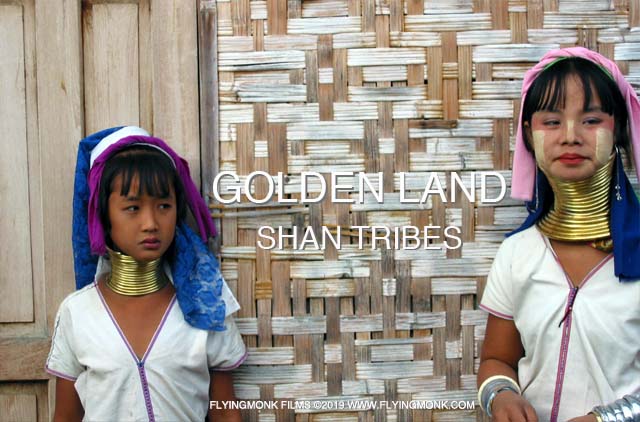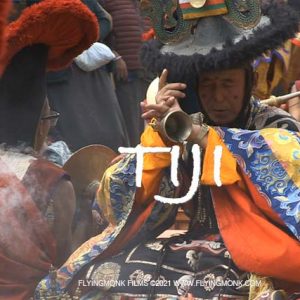Description
Golden Land-Shan Tribes; 25 minutes; © 2019 The Pa-O are dressed in black and with a checkered orange turban caring a hand-made red bag. The Palaung wear a colorful head covering, a short blouse, and a tubular dress. The Padaung women wear rings made out of brass placed around their necks, appearing to lengthen it.
The market in Chon is full of people from the nearby tribal area, a collection of Shan minorities spread around the state. There are about 600000 Pa-O people that live mostly in the Shan States. They are Buddhists having a close affiliation with the Bamar majority of Myanmar. The Shan people are related to the Dai of the Yunnan Province in China, speaking a language similar to Thai and Lao. They call themselves Tai and they live in Ta-Land, the term of Shan being coined by the westerners.
The Shan speak Tai, similar to the language spoken by the Thai and Lao people and they are using four written languages. Their original religion was animism but in time the Shan became Buddhists or Christians. Elements of the animist religion are more present nowadays in the healing ceremonies or specific shamanistic rituals in which Buddhist verses are recited over a vase of water from which the patient will drink.
A majority of the Buddhist Shan belong to the Theravada School, the more austere form of Buddhism spread in the southern parts of Asia that require the families to send one child to become a monk that may bring blessing and merit to the entire family. The central belief for the Shan is the power protection offered by spirits, locally named “nats”, to whom are made offerings in temples and spirit houses. The plethora of spirits is extremely diverse all being linked with natural phenomena, heavens, ancestors, household gods, and ghosts.
The power of all these spirits is augmented by the great powers associated with the Buddhism monks and the Buddhist deities. The Shan’ spirits tradition is also syncretic with the Buddhist beliefs of the afterlife and reincarnation. The belief is that people become spirits after death, some becoming good spirits and others, malevolent.
The women of the Kayan Lahwi tribe are well known for wearing rings made out of brass placed around their necks, appearing to lengthen it. They first start wearing the rings when they are around 5 years old and in time the coil is replaced by a longer one with more turns. The collar bone is pushed down by the weight of the brass and deform the clavicula that gives only the impression of the neck being lengthened. From here they carry the nickname of long-neck-women.
The anthropologists launched many theories related to this tradition, from making women more attractive by this diphormism to being protected not to be bitten by tigers. But when asked Padaung women say that their purpose for wearing the rings is beauty and cultural identity. Once installed, the coil is seldom removed, but when it is removed it is only to be replaced by a new or longer coil.
Follow us on Instagram




